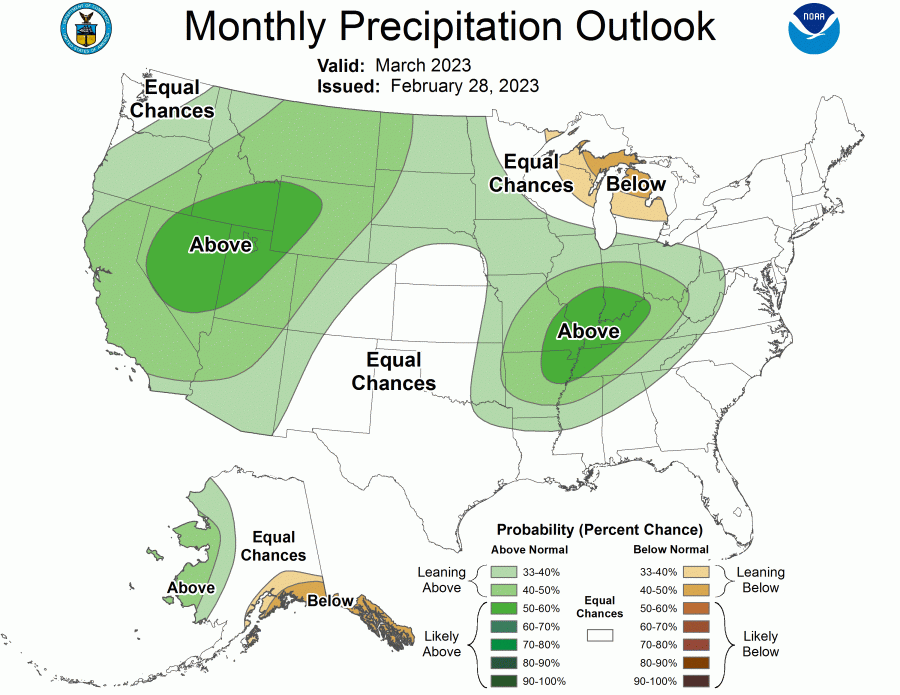As residents in Southern California’s mountains dig out from a series of winter storms that dumped several feet of snow, a warmer storm is headed to the Golden State.
The National Oceanic and Atmospheric Administration (NOAA) released its monthly precipitation outlook which shows the increased chance of rainfall in March, leaving some to wonder if the warmer rainfall could melt the snow in the mountain, overfill the nearby rivers and trigger widespread flooding.

However, experts say the chances of that happening are low.
“With this warm storm that’s coming, a lot of it will melt the low to mid-elevation snow and we should see an increased amount in the runoff but nothing that the reservoir shouldn’t be able to capture,” Sean de Guzman, the manager of snow surveys and water supply at California’s Department of Water Resources, said during a news briefing.
He explained that the snow expected to melt due to the warm rainfall would be in the 3,000 to 5,000 elevation range; the snowpack in the Sierra Nevada mountain range isn’t likely to melt due to the incoming storm.
The snowpack typically won’t start melting until April 1, when it’s at its peak.
“This snowpack is a cold snowpack, so if we have a cold snowpack, it takes a lot of energy to warm this thing up and generate a lot of runoff,” de Guzman said.
Daniel Swain, a climate scientist at UCLA, said on Twitter that should a significant warm “atmospheric river event occur,” in California, it could pose a significant flood threat. However, he said that is “speculation at this early juncture” since the present odds of such a warm atmospheric river happening are about one in five.
As of Friday, California’s snow water equivalent was 190% of the average for March 3 and 171% of the full season average. Snow water equivalent is a hydrology term for water depth if the snow were liquid.
The storm also improved drought conditions across the state, but experts caution residents against thinking the drought is over in California.






















